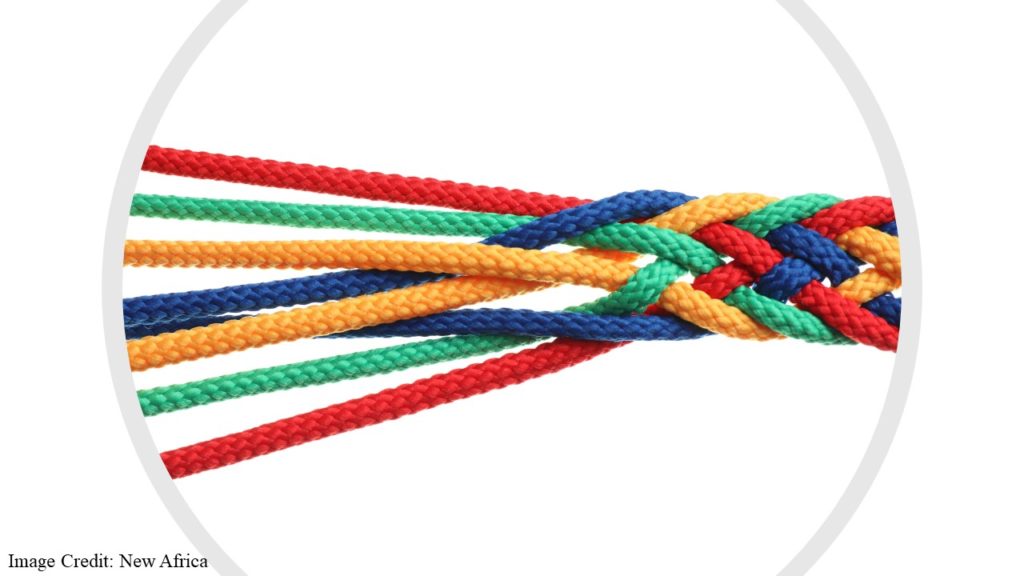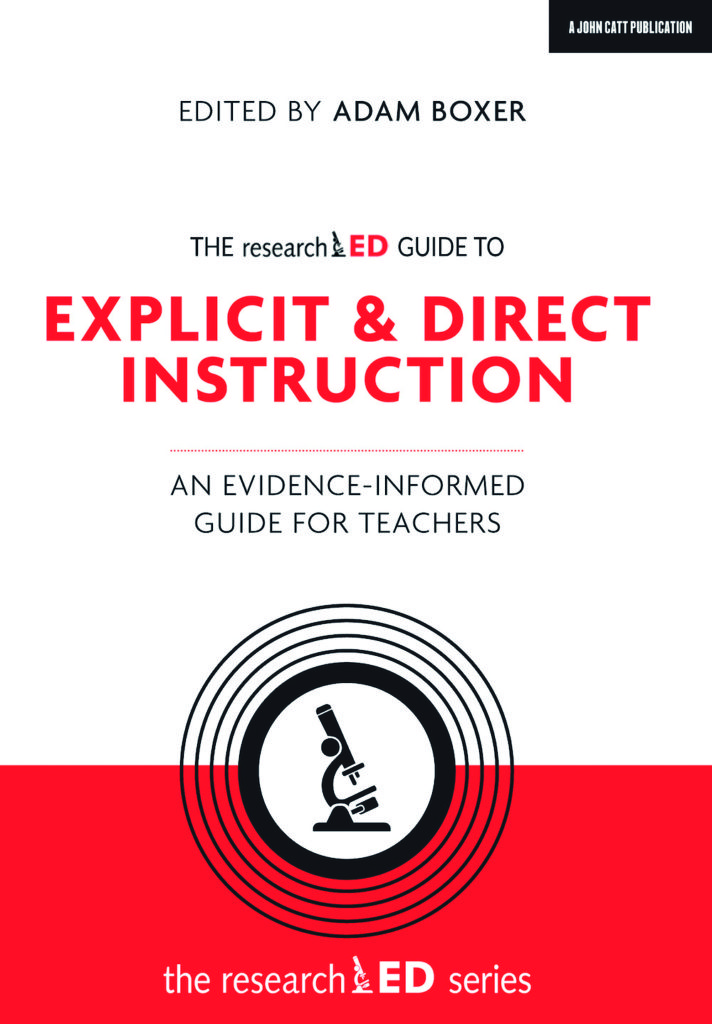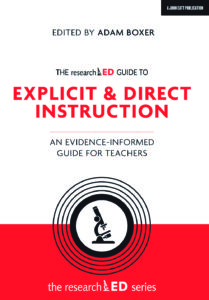Long-time readers know: I thoroughly enjoy research that challenges my beliefs.
After all, I (probably) have lots to learn when a study makes me think anew.
In this case — even better! — I’ve found a study that (I suspect) challenges almost everybody’s beliefs.
Here’s the story…
The “Active vs. Passive” Debate
Education scholars often fiercely advocate for “active learning.”
This phrase serves as a catchy shorthand for several educational beliefs and practices.
People who champion a “constructivist” approach to schools, or embrace project pedagogies, or advocate student “voice and choice” often describe their approach this way.
And, they often point out one crucial benefit to active learning: student “engagement.” Students who shape their own learning feel invested in and energized by their efforts.
Other scholars zealously dispute this account.
Whereas their approach has been dismissed as merely “passive learning,” they often prefer phrases such as “direct instruction” to explain their views.
In this view of learning, limitations on working memory prevent novices from tackling overly complex problems.
Students benefit from highly structured pedagogy, in which expert teachers help students build mental models (“schema”) and thereby achieve their own expertise.
For champions of direct instruction, “engagement” might look good (“the students are all so active!”), but doesn’t necessarily result in actual learning. (Why? Because students might well experience working memory overload….)
If you attended our conference in San Francisco at the beginning of February, you heard speakers embrace both sides of this debate.
This Does Not Compute
A study published in 2019 splendidly complicates this tidy summary.
A research team led by Dr. Louis Deslauriers ran a straightforward experiment.
Researchers worked with two groups of students enrolled in an introductory physics class at Harvard.
The first group studied topic A in an “active learning” paradigm, and topic B with a “passive lecture.”
The second group switched that order: topic A was “passive lecture,” and topic B was “active learning.
The research team found a surprising set of results.
Students learned more from the “active learning” classes, but enjoyed (and thought they learned more from) the “passive lecture.”
Paradoxically, passive learning enhanced engagement but reduced understanding. Active learning enhanced learning but reduced engagement.
Almost everyone will find that combination of results surprising, even disappointing.
Puzzle #1 (with a potential explanation)
Members of Team Active Learning, I suspect, predicted that the students would learn more when their professors followed that approach. Voila: they did.
And (almost certainly) teachers on that team predicted that active learning would result in higher engagement. Yet — as measured in this study — it didn’t.
Students clearly preferred the “passive lecture.”
For instance, survey results show that students wanted other physics courses to be taught with passive lecture/direct instruction.
The researchers have a hypothesis explaining this puzzling result. They wonder if the additional cognitive challenge created by active learning resulted in “desirable difficulty.”
That is: the students had to think harder — a challenge they didn’t really enjoy.
And this extra thought resulted in more learning. (You can watch a short video here to learn more about this hypothesis.)
Puzzle #2 (with another potential explanation)
Members of Team Direct Instruction, no doubt, are delighted that students preferred the (misnamed) “passive lecture.” According to the survey results, students felt they learned more from it than from the “active learning.”
And yet, Direct Instruction advocates no doubt feel genuine puzzlement that their preferred approach resulted in less learning. How could that be?
I myself have a hypothesis explaining this puzzling finding.
Contrary to many stereotypes, direct instruction advocates do NOT champion uninterrupted lecture.
Instead, they suggest that teachers start with straightforward explanation of core concepts.
Once those have been presented clearly, then students should do substantial independent mental work with those ideas.
In other words, advocates of direct instruction heatedly reject the label “passive learning.” Students do plenty of active cognitive work after they get the benefit of initial priming from instructors.
And yet, in this study, students in the passive learning group had to, in the researchers’ words, “adjust to a complete elimination of any active engagement” — such as “demonstrations, … interactive quizzes, or conceptual questions.”
NO educational thinker feels surprise that students learn less in the total absence of active engagement.
That’s not “direct instruction.” That’s … well … that’s a very bad idea. (To be clear: a very bad idea that happens all too frequently.)
A (Potential) Resolution
Because the “passive learning” condition subjected the students to pure lecture, then this study seems much less surprising (to me).
With “passive learning,”
Students learned LESS from uninterrupted lecture. (Why? They didn’t do any independent mental work with the material.)
Because the professor’s explanation made sense, on the other hand, they FELT they understood the material better.
With “active learning,”
Students learned MORE, because they interacted with the concepts and problems individually.
Alas, they FELT they understood less because they experienced the “difficult” half of “desirable difficulties.”
In other words: the study results seem confusing because the labels don’t mean what we thought they meant.
Until we know EXACTLY what happened in both “passive” and “active” learning, we can’t really judge how well those phrases align with our preconceptions — and with our own teaching practices.
One more thought
If a particular diet benefits, say, professional athletes, will it benefit me?
I’m going to be honest: I’m not a professional athlete.
A diet that benefits their level of physical fitness, metabolism, professional goals, etc., might not be healthy for me. (In his swimming prime, Michael Phelps ate 8000-10,000 calories a day. I suspect my doctor would discourage me from doing so.)
If Harvard even remotely lives up to its reputation, then students in Harvard physics classes understand an impressive amount of science. They have a great deal of motivation to learn more about science. They’ve been impressively successful in academic pursuits.
If a teaching method works with Harvard physics students, will it work with my 10th grade English students? Will it work with your 2nd graders? Maybe … but also, maybe not.
In general: I’m hesitant to apply research done at Harvard (or Stanford, or Oxford, or the US Naval Academy…) to most K-12 learning.
It’s entirely possible that the method “works” not because of the method, but because of the extraordinary background of the students who participate in it.
TL;DR
Before we embrace research “active learning” or “direct instruction,” we should know…
… EXACTLY what those labels mean in the research, and
… the GOODNESS OF FIT between those research participants and our students.
Dan Willingham has wisely written: “one study is just one study, folks.”
 About Andrew Watson
About Andrew Watson 



















